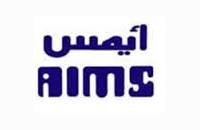Global Methyl Isobutyl Carbinol (MIBC) Market Research Report 2022 - ResearchAndMarkets.com
The "Methyl Isobutyl Carbinol (MIBC) Market - Growth, Trends, COVID-19 Impact, and Forecasts (2022 - 2027)" report has been added to ResearchAndMarkets.com's offering.
The market for methyl isobutyl carbinol (MIBC) is expected to expand, at a CAGR of around 3% during the forecast period.
One of the major factors driving the market studied is the surging demand for frothers in copper and molybdenum sulfide ores.
COVID-19 has negatively affected the demand for methyl isobutyl carbinol (MIBC) in 2021. The COVID-19 pandemic has brought a downturn in the production of plasticizers, frothers, corrosion inhibitors, lube oils, and hydraulic fluids, which leads to the decrease in demand for chemicals such as methyl isobutyl carbinol (MIBC) used in various end-user industries.
Key Highlights
- Upcoming mining operations in Latin America is expected to act like an opportunity in the market studied.
- Asia Pacific Region is expected to witness the highest growth rate and is set to dominate the global market in the forecast period (2022-2027).
- On the flip side, the toxic effects of MIBC are hindering the growth of the market studied.
Key Market Trends
Plasticizers Segment to Dominate the Market
- Methyl isobutyl carbinol (MIBC) is used as a raw material in the manufacturing of methyl amyl sebacate and methyl amyl phthalate, which are used as plasticizers. MIBC is used as a precursor to some plasticizers.
- Plasticizers are further widely used in various applications, such as flooring and wall, film and sheet coverings, wires and cables, coated fabrics, and automotive interiors, among others.
- In the construction industry, MIBC has major applications in paints and surface coatings. Currently, the building and construction industry is a thriving industry in several emerging economies of Asia-Pacific and the South American region, which is expected to drive the usage of the MIBC market.
- The global construction market is anticipated to expand over 70% by 2030, resulting in an increase in the demand for methyl isobutyl carbinol.
- For instance, President Joe Biden's coronavirus relief package is believed to spearhead the U.S. construction output in the years after 2021. The USD 1.9 trillion stimulus is expected to raise infrastructure spending, especially with other relief plans also focusing on clean energy and transportation. This, in turn, is likely to increase the demand for MIBC.
- The factors driving the building and construction industry are the ever-increasing population, rapid urbanization, as well as the rise in purchasing power. As a result of the aforementioned factors, investments in infrastructure are being made, and are included in plans.
China to Dominate the Asia-Pacific Market
- China is the largest producer of various metals, such as coal, gold, steel, etc. Infrastructure-driven growth in Asia has resulted in a significant increase in demand for commodities, like iron ore, copper, and coal.
- Increasing demand for such commodities from the construction industry has been driving the growth of mining industry in China.
- China's construction industry developing rapidly, due to the central government's push for infrastructure investment, to sustain economic growth.
- The increasing number of mining operations and upcoming government projects in China are providing a lucrative opportunity for the growth of the market in the future.
- However, the economy looks shaky as the country is dealing with Evergrande crisis (the company has USD 300 billion of liabilities alone as of June 2021) and a full-fledged Chinese financial crisis and a recession can't be ruled out.
- Aforementioned factors are expected to impact the demand of Methyl Isobutyl Carbinol (MICB) in the forecast period.
Competitive Landscape
The methyl isobutyl carbinol (MICB) market is fragmented.
The major companies include
- AkzoNobel NV
- Arkema Group
- BASF SE
- Celanese Corporation
- Cetex Petrochemicals
- Dow
- Eastman Chemical Company
- EVONIK
- Hubei Jusheng Technology Co. Ltd
- LG Chem
- Mitsubishi Chemical Corporation
- Mitsui Chemicals Inc.
- Monument Chemical
- Sumitomo Chemical Co. Ltd
- TORAY INDUSTRIES INC.
For more information about this report visit https://www.researchandmarkets.com/r/7tjh93
View source version on businesswire.com: https://www.businesswire.com/news/home/20220330005564/en/



